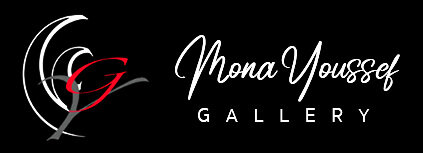Unlocking the Mysteries of The Artistic Mind
Picasso believed that "Art is the lie that reveals the truth." while I believe that” Art is a powerful reality that is revealed in different methods; shapes, forms, colours, musical notes, and in even spoken or written words, to bring them to life with feelings.”
Science is using art to learn about the mind, looking for hard facts in the most ethereal places. It is notable that some great artists turned out to be the world's first neuroscientists. Consider the flightless fluffs of brown otherwise known as herring gull chicks. Since they're entirely dependent on their mothers for food, they're born with a powerful instinct. Whenever they see a bird beak, they frantically peck at it, begging for their favorite food: a repeated meal. But this reflex can be manipulated. Expose the chicks to a fake beak—say, a wooden stick with a red dot that looks like the one on the end of an adult herring gull's beak, they would peck vigorously at that, too. Should the chicks see a wood stick with three red dots, they peck even faster. Abstracting and exaggerating the salient characteristics of a mother gull's beak strengthens the response. The phenomenon is known as the "peak-shift effect," since a peak pecking response comes from a shifted stimulus. In it lies one of the core principles of visual art.
The Truth in the Lie In 1906, Pablo Picasso was determined to reinvent the portrait and push the boundaries of realism, and one of his early subjects was Gertrude Stein. After months in his Paris studio, carefully reworking the paint on the canvas, Picasso still wasn't satisfied. He didn't finish the painting until after a trip to Spain. IT IS A common feeling with artists, struggling for perfection, knowing that there is only one perfect artist, they learned to let go and move on to a new painting or to start a new chapter.
What Picasso saw there that affected him so deeply has been debated—the ancient Iberian art, the weathered faces of Spanish peasants—but his style changed forever. When he returned to Paris, he gave Stein the head of a primitive mask. The perspective was flattened and her face became a series of dramatic angles. Picasso had intentionally misrepresented various aspects of her appearance, turning the portrait into an early work of cubist caricature. Despite the artistic license, the painting is still recognizable as Stein. Picasso took her most distinctive features—those heavy, lidded eyes and long, aquiline nose—and exaggerated them. Through careful distortion, he found a way to intensify reality. As Picasso put it, "Art is the lie that reveals the truth." To me” Art is a reality that revealed in different ways, shapes, forms, and colours.”
What's surprising is that such distortions often make it easier for us to decipher what we're looking at, particularly when they're executed by a master. Studies show we're able to recognize visual parodies of people—like a cartoon portrait of Richard Nixon—faster than an actual photograph. The fusiform gyrus, an area of the brain involved in facial recognition, responds more eagerly to caricatures than to real faces, since the cartoons emphasize the very features that we use to distinguish one face from another. In other words, the abstractions are like a peak-shift effect, turning the work of art or the political cartoon into a "super-stimulus." The sly connection between the instincts of baby gulls and abstract art is the work of V.S. Ramachandran, neuroscientist and director of the Center for Brain and Cognition at the University of California at San Diego. Ramachandran believes the peak-shift effect explains a wide variety of art, from abstract expressionist paintings to ancient religious sculptures like a 12th-century Indian sculpture of the goddess Parvathi with exaggerated feminine features. These creations are all examples of the "deliberate hyperbole" that defines the artistic process, says Ramachandran. In this sense, the job of an artist is to take mundane forms of reality—whether a facial expression or a bowl of fruit—and make those forms irresistible to the human brain. As Ramachandran puts it, "If herring gulls had an art gallery, they would hang a long stick with three red strips on the wall; they would worship it, pay millions of dollars for it, call it a Picasso, but not understand why they are mesmerized by it. That's all any art lover is doing when buying contemporary art: behaving exactly like those gull chicks."
